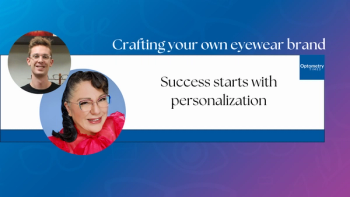
What happened in optometry this week: January 20 - January 24
Catch up on what happened in optometry during the week of January 20-January 24.
Catch up with what Optometry Times shared this week:
Increasing burden of visual impairment over 10 years in highly myopic patients
By Lynda Charters
A new study of children and adults in China that investigated the effects of progression of myopia found that over the course of 10 years the best-corrected visual acuity (BCVA) and the visual function decreased, with an increasing incidence rate of moderate and severe visual impairment.1 First author Yanping Chen, MD, from the State Key Laboratory of Ophthalmology, Zhongshan Ophthalmic Center, Sun Yat-Sen University, Guangdong Provincial Key Laboratory of Ophthalmology and Visual Science, Guangdong Provincial Clinical Research Center for Ocular Diseases, Guangzhou, China, reported the results.
GSLS 2025: Scleral lens fitting in a keratoconus patient with a complex history
By Abby Gillogly Harsch, OD, FAAO, FSLS; Emily Kaiser Maharjan, Assistant Managing Editor; and Jordana Joy, Associate Editor
Abby Gillogly Harsch, OD, FAAO, FSLS, presented a poster at the Global Scleral Lens Symposium (GSLS) in Las Vegas on fitting scleral lenses in a keratoconus patient with a history of cataract, corneal transplant, and glaucoma surgery. Despite the complex surgical history, including a bleb, the patient was successfully fitted with Bausch + Lomb's ZenLens featuring a MicroVault. Adjustments were necessary to ensure the lens landed correctly over the bleb. Harsch emphasized the importance of consulting the Bausch + Lomb team for lens fitting advice and highlighted the need to balance surgical requirements with patient quality of life. The key takeaway is to explore lens add-ons to maintain patient satisfaction.
NeurEYE research team leads AI-supported dementia detection program with optometrists in Scotland
By Hattie Hayes
Edinburgh Innovations, the University of Edinburgh’s commercialization service, announced a research program which will use artificial intelligence (AI)-based software and anonymized eye scans from patients throughout Scotland. The NeurEYE research team, led by the University of Edinburgh and in conjunction with Glasgow Caledonian University, will use millions of eye scans from Scottish optometrists to create the data set. Permission to use the data comes from the Public Benefit and Privacy Panel for Health and Social Care, a part of NHS Scotland. Once data is collected and anonymized, researchers will apply AI and machine learning tools to analyze the images for dementia risk and other bioindicators of brain health.
Indiana University receives funding for advancing oculomics
By Jordana Joy, Associate Editor
Indiana University (IU) scientists have received funding support for a new program from the National Institutes of Health to support the emerging field of oculomics, which uses the eye as an avenue to investigate diseases that affect the whole body.1 The 3 year, $4.8 million award comes from the NIH Venture Program Oculomics Initiatives and will support the development of next generation ophthalmoscopes, which can detect early warning signs of conditions such as diabetes, heart and kidney disease, sickle cell anemia, and Alzheimer disease by scanning the eye.1
The Vision Council announces travel incentives, expanded networking to 2025 Vision Expo East
By Jordana Joy, Associate Editor
Vision Expo East has been revitalized and is ready to showcase the newest trends, tech, and fashion in eye care and eyewear. During a webinar hosted by The Vision Council, expansions and reimagined events and programming were detailed for this year’s event, being held in Orlando, Florida from February 19 to 22. This will be the event’s first year outside of New York City.
Newsletter
Want more insights like this? Subscribe to Optometry Times and get clinical pearls and practice tips delivered straight to your inbox.
















































.png)


